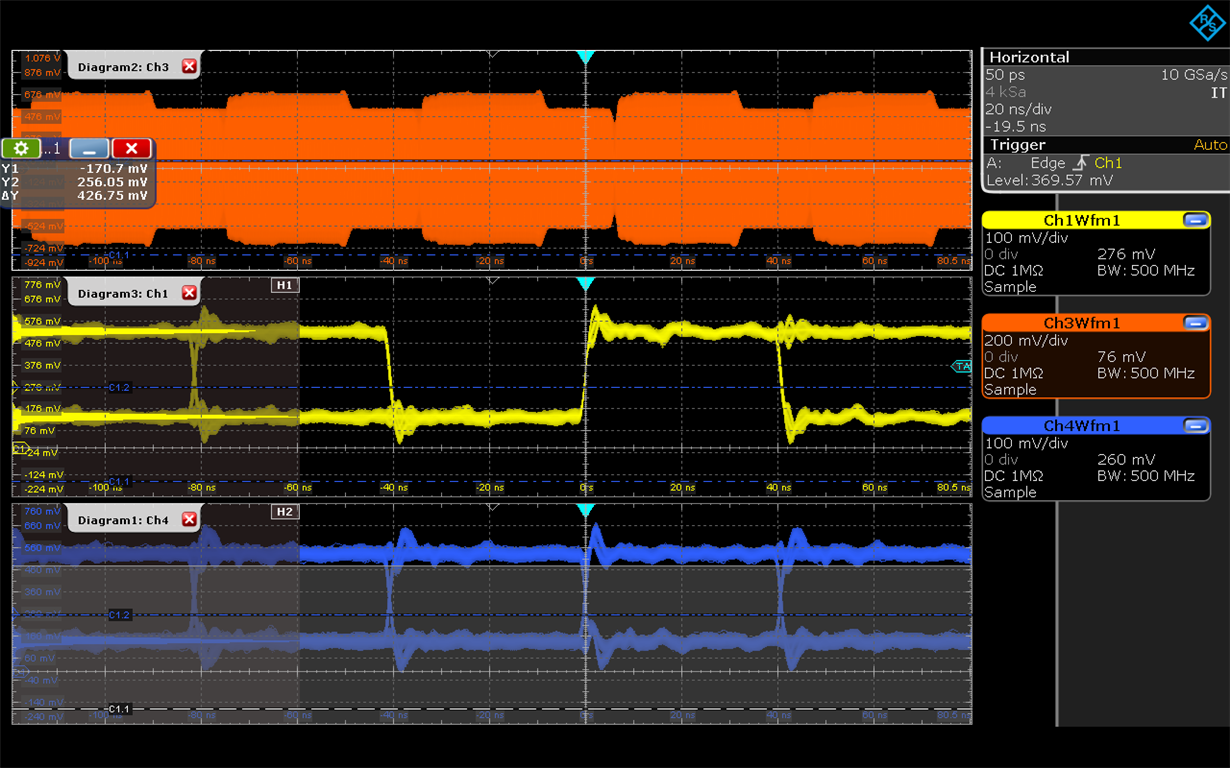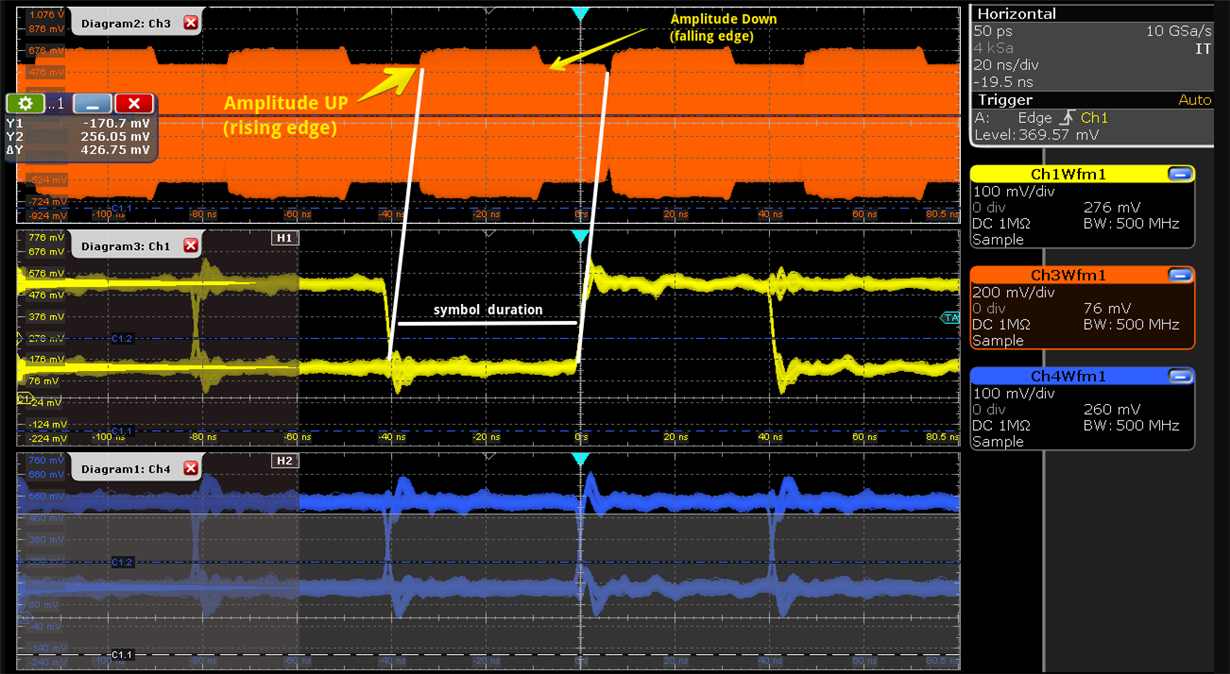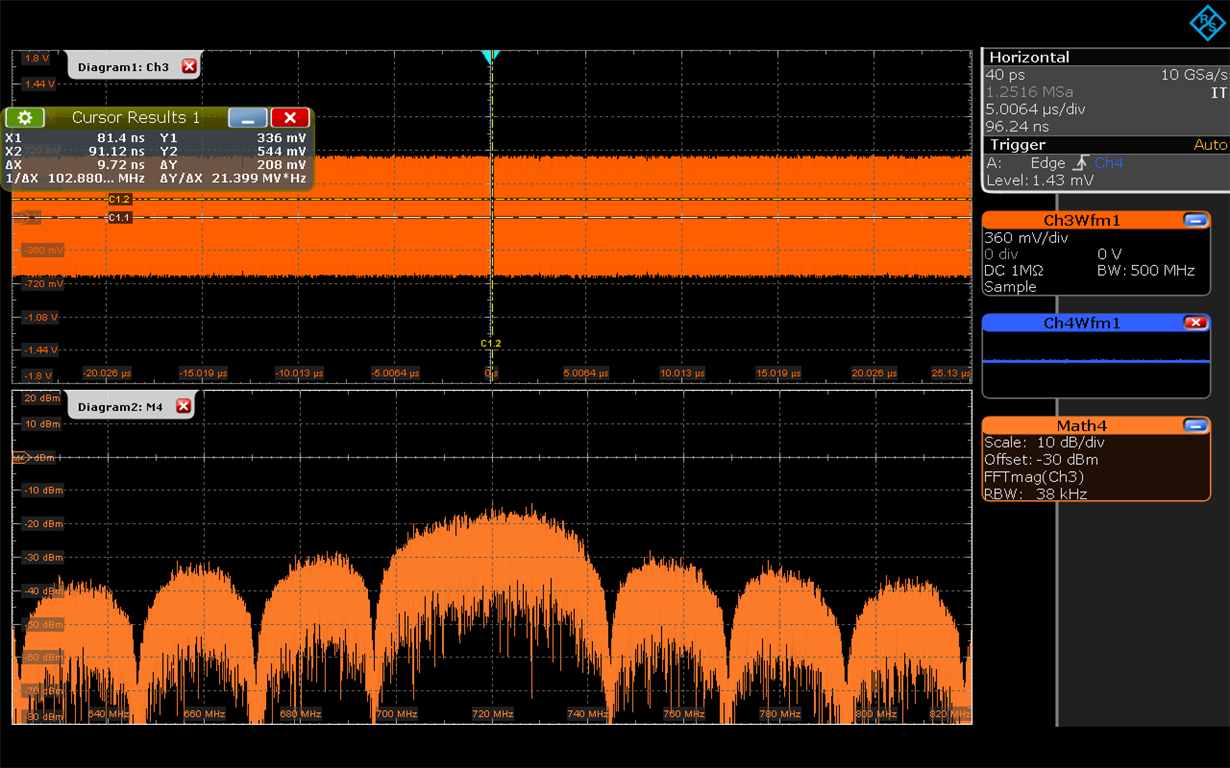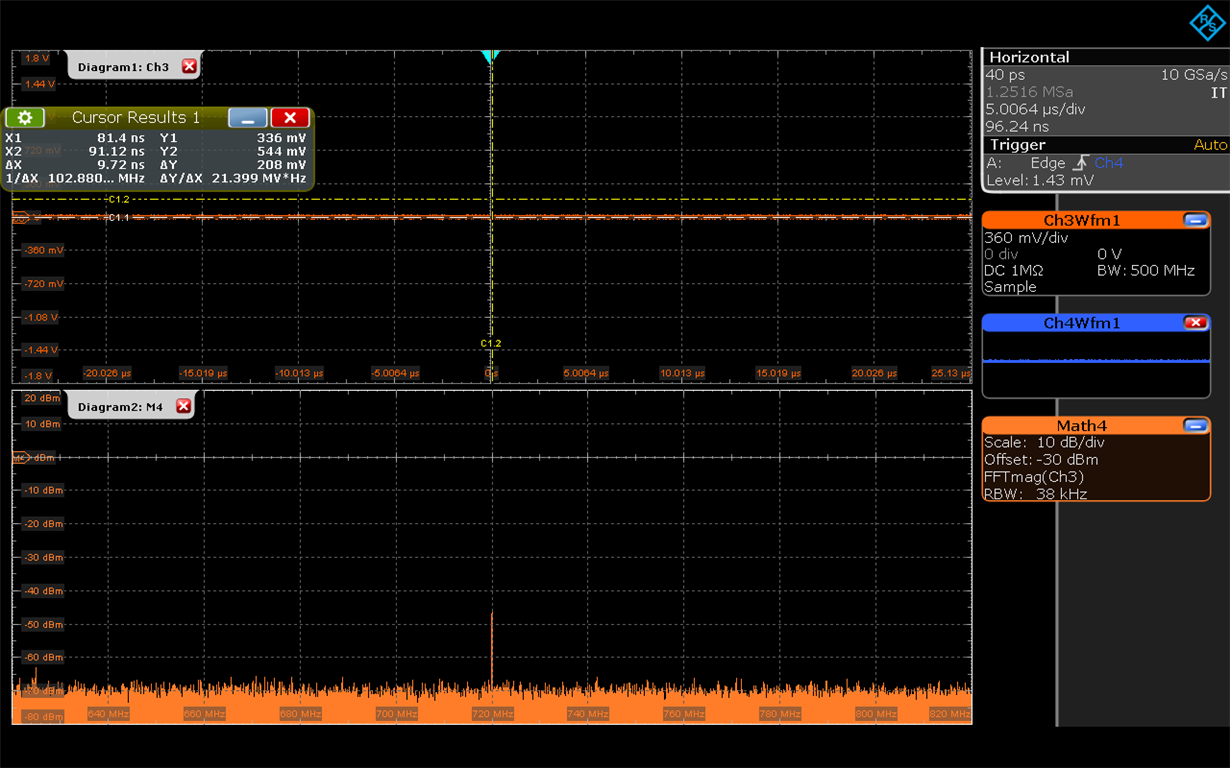Part Number: TSW38J84EVM
We work with the TSW38J34 board. At the output of the modulator TRF3722 you can see the changes in signal amplitude. At the input of the modulator (I and Q) QPSK modulation signal. There is no amplitude distortion at the input of the modulator. What could be the problem?









